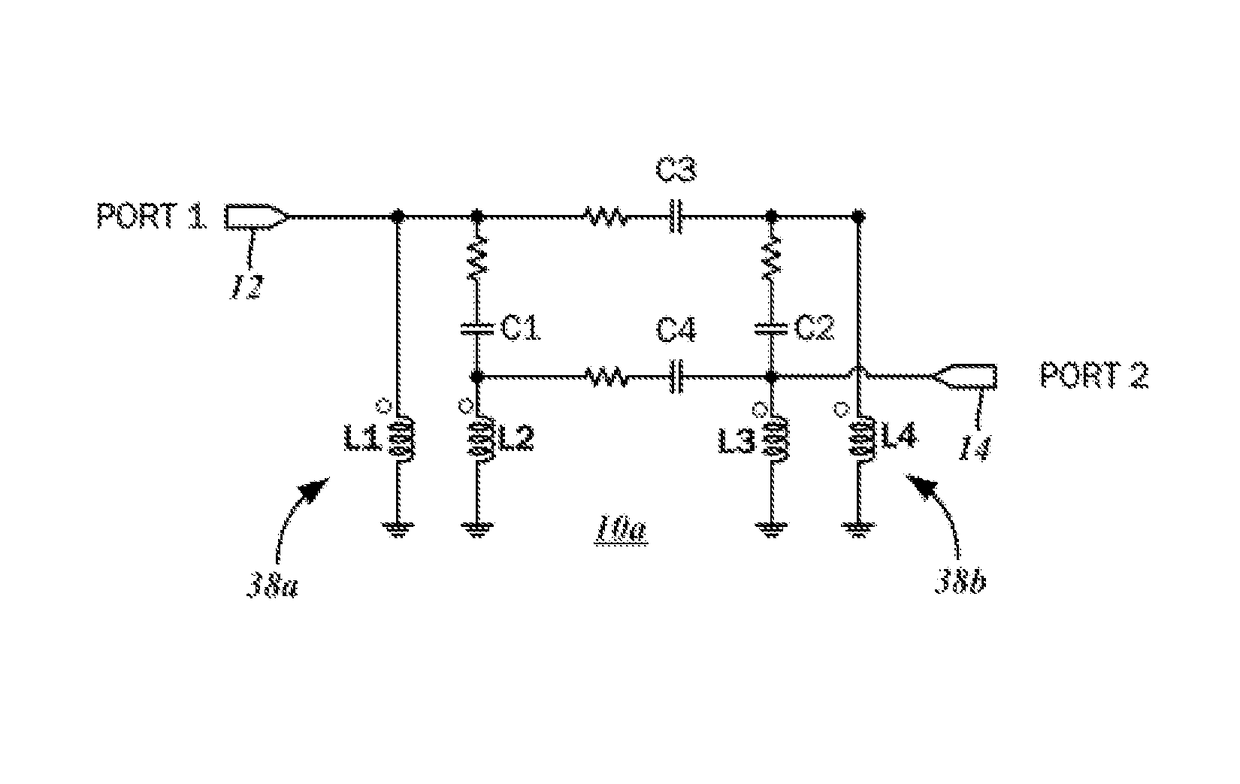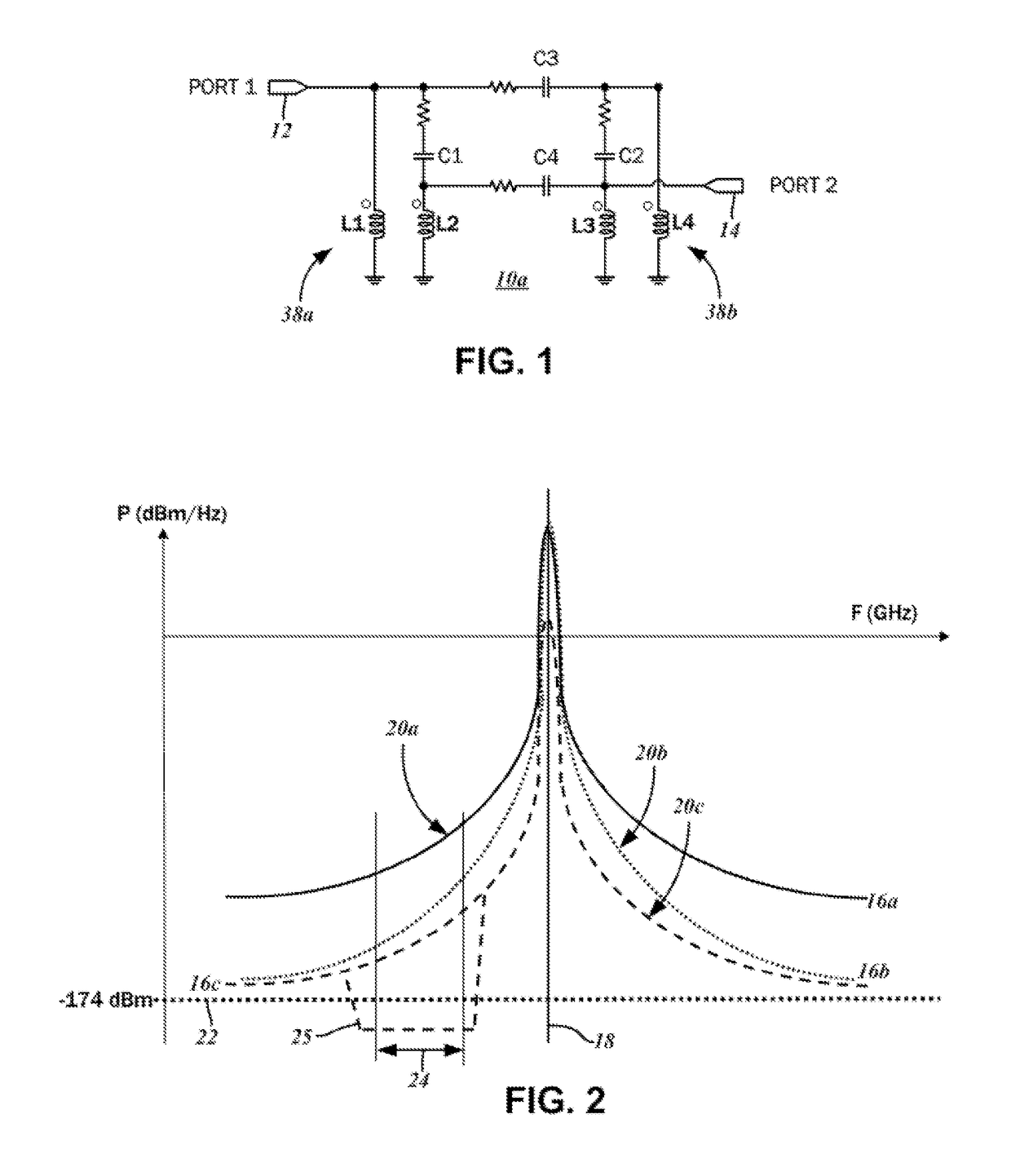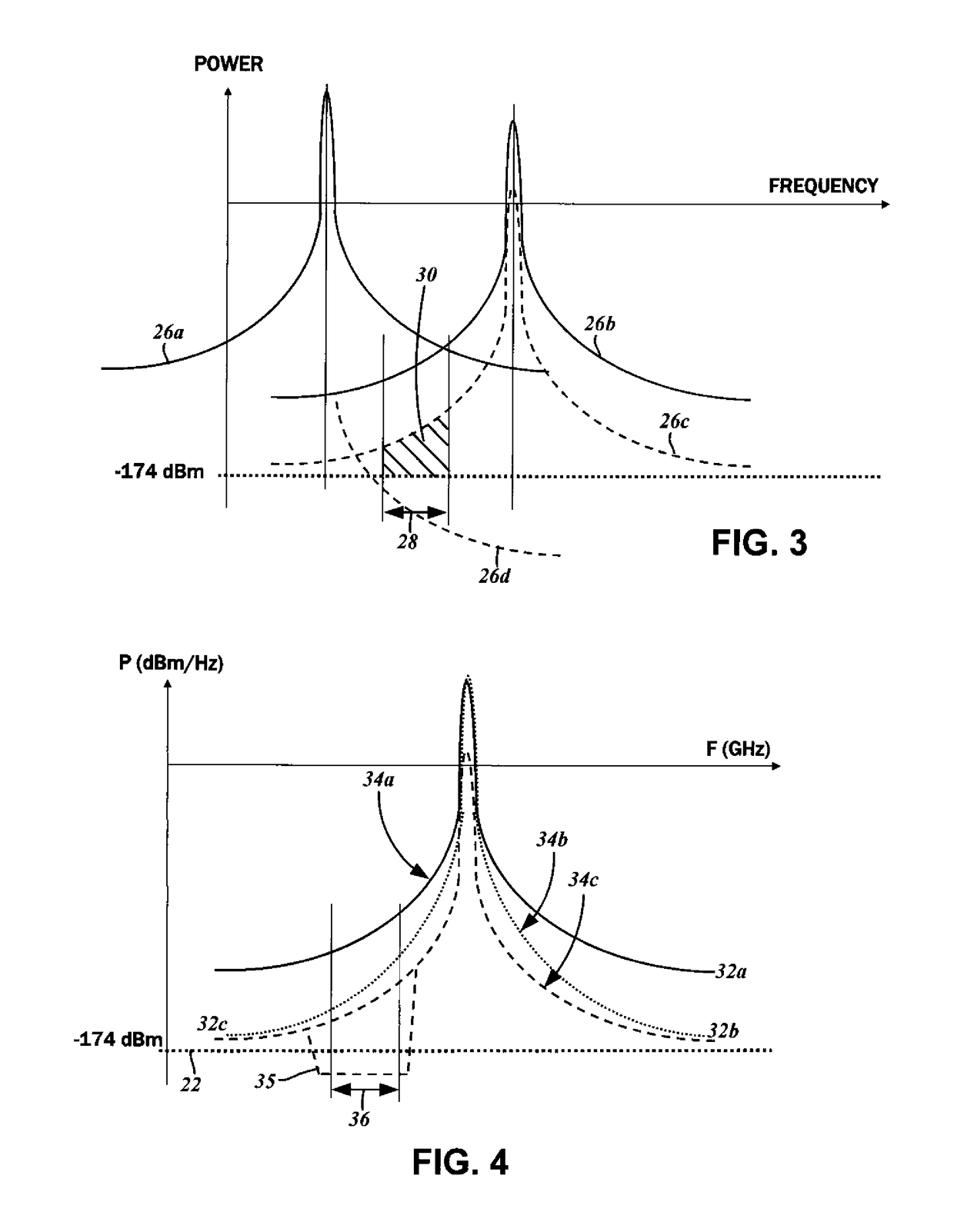Coupled-resonator on-die filters for WiFi applications
a technology of on-die filter and coupled resonance, which is applied in the direction of impedence networks, multiple-port networks, electrical apparatus, etc., can solve the problems of high level of unwanted emissions of counterpart receivers, interference of signals generated at 5 ghz power amplifiers with 2 ghz low noise amplifiers, and insufficient power generation of transceiver circuitry. it can achieve low insertion loss, improve matching characteristics, and high rejection rate
- Summary
- Abstract
- Description
- Claims
- Application Information
AI Technical Summary
Benefits of technology
Problems solved by technology
Method used
Image
Examples
first embodiment
[0055]With reference to the schematic diagram of FIG. 1, a coupled resonator filter 10a generally has a first port 12 and a second port 14. The first port 12 is understood to be an input port, and accordingly receives an input signal. Various embodiments of the present disclosure contemplate the rejection of spurious emissions from a dual band, 2.4 GHz / 5 GHz WLAN transceiver, also referred to as WiFi, and so the input signal is understood to be that which is generated thereby. The coupled resonator filter 10 rejects these spurious emissions from the input signal, and passes the same to the second port 14, which is understood to be an output port. It is possible for the first port 12 to serve as the output port and for the second port 14 to serve as the input port, however.
[0056]The graph of FIG. 2 illustrates one possible interference from WLAN transmit signals as affecting a GPS (Global Positioning System) receiver. A first plot 16a is of the WLAN transmit signal at the WLAN antenn...
second embodiment
[0068]The graph of FIG. 7 plots the various S-parameters of the coupled resonator filter 10b. A first plot 40a shows the input return loss S11, a second plot 40b shows the output return loss S22, a third plot 40c shows the gain S21 and a fourth plot 40d shows the isolation S12. As shown, the input return loss S11 and the output return loss S12 are both less than −15 dB at the 2.4 GHz WLAN operating frequency.
[0069]Referring now to the schematic diagram of FIG. 8, a third embodiment of the coupled resonator filter 10c is understood to be comprised of a first stage 42a and a second stage 42b, both of which are identically configured. As will be discussed below, there are variations in the way the first stage 42a and the second stage 42b are interconnected, with the first variant thereof being the third embodiment 10c. Both stages are comprised of the first resonator circuit 38a and the second resonator circuit 38b. As described above, the first resonator circuit 38a includes the capac...
third embodiment
[0071]This cascaded configuration is envisioned to yield a substantial enhancement in the rejection of spurious signal components in certain cellular communications operating frequencies—in particular, those below 2.17 GHz, as well as GPS receive frequencies in the 1.575 GHz range. It is possible for the rejection levels to exceed 50 dB. Similar input and output return loss performance is expected with respect to the coupled resonator filter 10c. The graph of FIG. 9 plots the various S-parameters therefor, and includes a first plot 40a showing the input return loss S11, a second plot 40b showing the output return loss S22, a third plot 40c showing the gain S21 and a fourth plot 40d showing the isolation S12.
[0072]The schematic diagram of FIG. 10 is of a fourth embodiment 10d of the coupled resonator filter, also referred to as a second variation of the cascaded configuration. Similar to the third embodiment 10c, there are two stages 42a, 42b, but as will be described in further deta...
PUM
 Login to View More
Login to View More Abstract
Description
Claims
Application Information
 Login to View More
Login to View More - R&D
- Intellectual Property
- Life Sciences
- Materials
- Tech Scout
- Unparalleled Data Quality
- Higher Quality Content
- 60% Fewer Hallucinations
Browse by: Latest US Patents, China's latest patents, Technical Efficacy Thesaurus, Application Domain, Technology Topic, Popular Technical Reports.
© 2025 PatSnap. All rights reserved.Legal|Privacy policy|Modern Slavery Act Transparency Statement|Sitemap|About US| Contact US: help@patsnap.com



